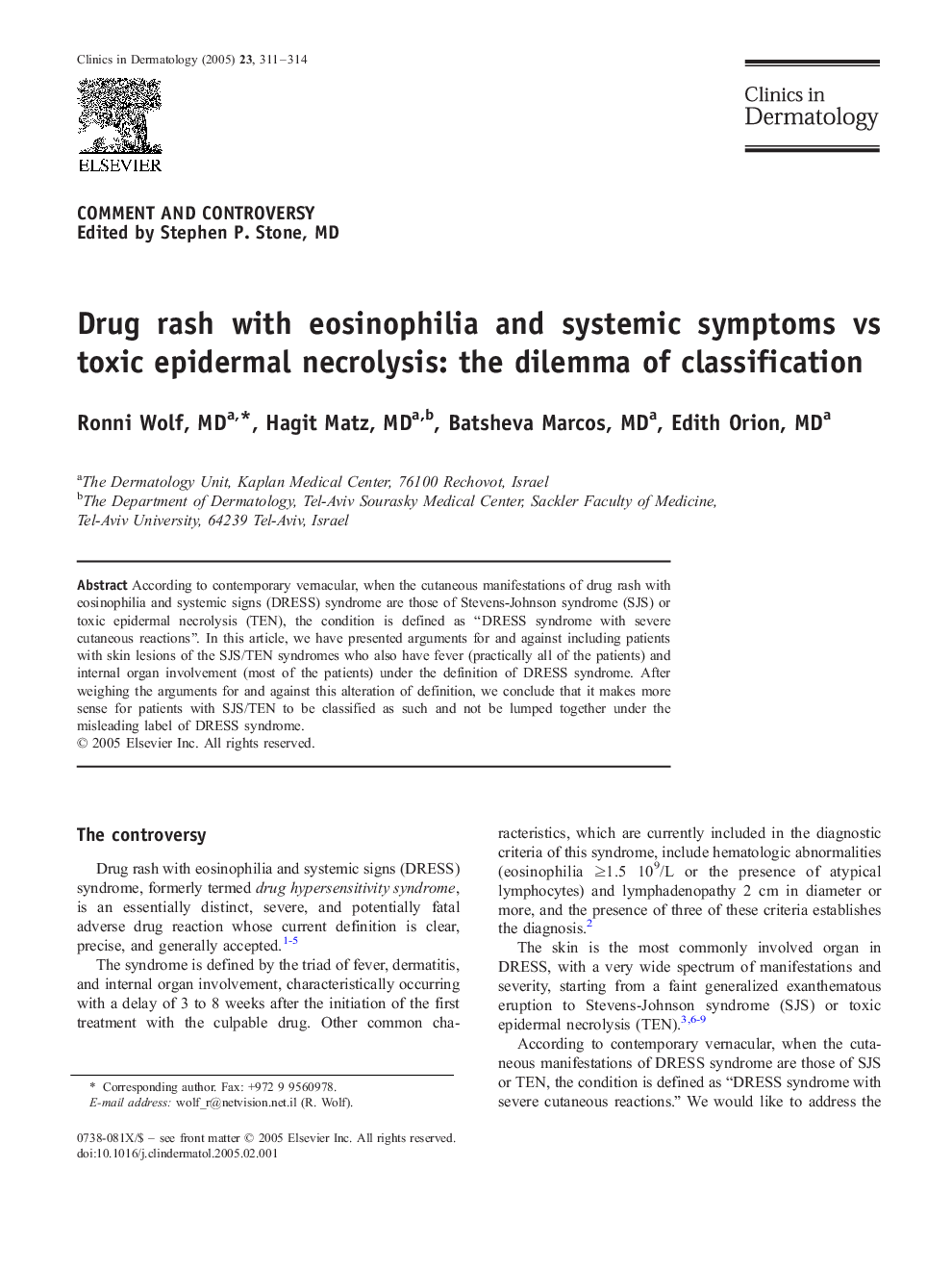| Article ID | Journal | Published Year | Pages | File Type |
|---|---|---|---|---|
| 9224605 | Clinics in Dermatology | 2005 | 4 Pages |
Abstract
According to contemporary vernacular, when the cutaneous manifestations of drug rash with eosinophilia and systemic signs (DRESS) syndrome are those of Stevens-Johnson syndrome (SJS) or toxic epidermal necrolysis (TEN), the condition is defined as “DRESS syndrome with severe cutaneous reactions”. In this article, we have presented arguments for and against including patients with skin lesions of the SJS/TEN syndromes who also have fever (practically all of the patients) and internal organ involvement (most of the patients) under the definition of DRESS syndrome. After weighing the arguments for and against this alteration of definition, we conclude that it makes more sense for patients with SJS/TEN to be classified as such and not be lumped together under the misleading label of DRESS syndrome.
Related Topics
Health Sciences
Medicine and Dentistry
Dermatology
Authors
Ronni MD, Hagit MD, Batsheva MD, Edith MD,
